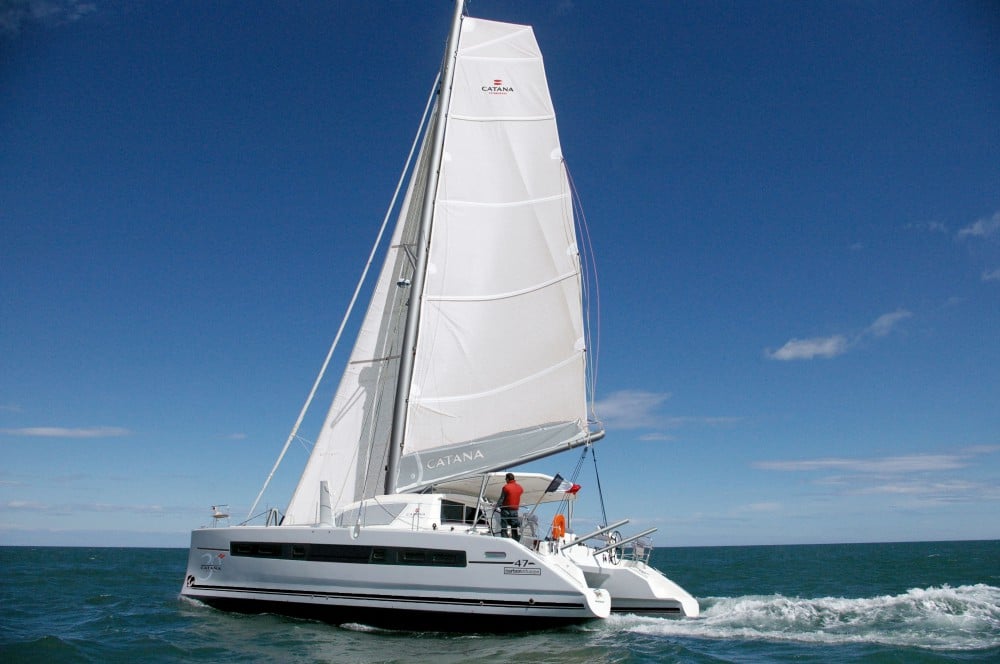
The Catana 47’s design brief is straightforward: The big, powerful French catamaran is intended for the performance-oriented cruising sailor who wishes to circumnavigate or undertake a similar extended voyage. Indeed, once CW‘s Boat of the Year judging panel took turns trying to peg the speedo, all agreed that this truly is a sailor’s sailboat.
The 47 was designed by Christophe Barreau to replace the 471. Six non-carbon boats were built before Catana began using carbon fiber in its infusion molding to reduce weight by approximately 1,500 pounds from earlier hulls.
The boat we sailed last fall on Chesapeake Bay sped off on a beam reach at nearly 9 knots in just over 12 knots of breeze. With the boat sailing closehauled, the GPS speed over the ground still read in the high 7s, not bad for a cat with plush accommodations and all the gear and accoutrements—owners suite, two guest cabins, lavish galley, genset, watermaker, electric winches—that you’d expect to find on a vessel with a $900,000-plus price tag. And that rack-and-pinion Lewmar steering was smooth as silk.
The 47’s performance is due to a couple of factors. First, the square-topped main and 145-percent genoa provide the requisite sail area to get the boat moving in light to moderate breezes, yet still offer abundant reefing options for more interesting conditions. Tulip-shaped bows achieve a fine entry when you’re sailing on the wind and lots of forward buoyancy when running off it. Twin daggerboards, when lowered, provide up to 8 feet of draft, which translates into lateral resistance and lift for sailing to weather; when fully raised, the 3.5-foot draft creates less drag for downwind work.
The building materials also enhance underway prowess. The laminated hulls are a sandwich of infused Airex closed-cell foam, glass, and polyester and vinylester resin (for osmosis protection), with Twaron forward for collision protection and below the waterline for strength, and carbon fiber at critical points to take chainplate and structural loads. The deck is also an infused foam sandwich, and the inner skin of the bimini top, cabin top and structural bulkheads are built from infused carbon fiber and foam to reduce weight aloft.
While inspecting the boat, CW’s BOTY judges noted an exposed electrical panel and other electrical issues that caused them to pause, and they also felt that engine controls should be present at both of the helm stations, set outboard on either hull, as visibility to port under power was a challenge.
That said, sitting at those helms, with all sail-control lines led aft to a pair of powerful winches amidships and sheet winches near at hand, I couldn’t help but imagine clicking off the miles on a long tropical passage.
In the words of BOTY judge Alvah Simon, “I like sailing the Catana 47 because everything was exactly where it needed to be.” Enough said.
This article first appeared as “New Cats on the Prowl” in the June 2013 issue of Cruising World.








